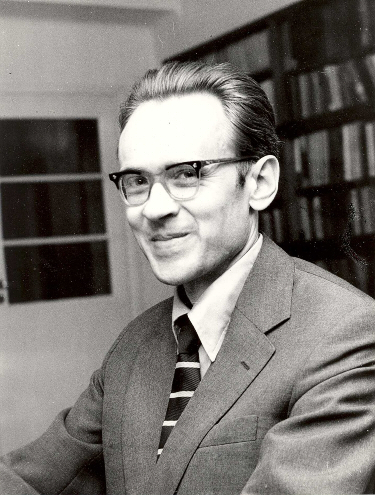
This website is dedicated to the achievements of prof. Andrzej Mariusz Trautman. Andrzej Mariusz Trautman is a Polish mathematical physicist who has made contributions to general relativity. His work was devoted to:
- gravitational waves and radiation
- theory of gravitation with spin and torsion
- gauge theories and their geometric,
- bundle-theoretic aspects
- pure spinors, spin and pin structures on Riemannian manifolds
For his contribution to the development of science received:
- State Prize of the I degree (1976)
- Prize Foundation. A. Jurzykowski (1984)
- Medal of Marian Smoluchowski (1986)
He received an honorary doctorate from the Silesian University in Opava in 2001. He was awarded the Comanders Cross of the Polonia Restituta in 2016.
Biograpy
Born in Warsaw on January 4th, 1933. His grand-father, Marius André, was a French diplomat writing poetry in the langue d'oc (occitan). His father, Mieczyslaw, was a painter; he died in 1941. During the Warsaw Uprising, in August 1944, Andrzej and his mother Elise were deported to Germany. After the war they spent a short time in Lublin where lived Stefan, Mieczysław's brother. In the fall of 1945, Andrzej and his mother went to France to join Elise's mother and sister. In 1949, Andrzej graduated from a Polish secondary school in Paris and then returned to Poland. He studied at the Technical University (Politechnika Warszawska) and obtained in 1955 the Master's degree in radio engineering. Thanks to encouragement and help from Jerzy Plebański, he joined, as a doctoral student, Leopold Infeld's group at the Institute of Physics of the Polish Academy of Sciences. In 1958, at the invitation of Felix Pirani, he went for three months to Hermann Bondi's group at King's College, London, where he gave a series of lectures on general relativity. After getting in 1959 the Ph. D. degree in physics, he went on a post-doctoral fellowship to Abdus Salam's group at Imperial College, London. In 1961, he spent seven months with Peter Bergmann at Syracuse University, where he collaborated with Ivor Robinson and interacted with Art Komar, Ted Newman, Roger Penrose and Engelbert Schucking. Róża Michalska, who later became his wife, was also there. From the academic year 1961-62 on, he has been associated with the Institute of Theoretical Physics of Warsaw University and was the director of the Institute from 1975 to 1985. After Infeld's retirement in 1967, he became head of the chair of Electrodynamics and Relativity. He was privileged to have visited several outstanding scientists and centres of research; of special significance for him were contacts with André Lichnerowicz, Roger Penrose, Subrahmanyan Chandrasekhar, and Chen Ning Yang. Since 1969 he has been a member of the Polish Academy of Sciences, serving as its vice-president in 1978-80. He gave invited lectures at the GRG Conferences at Royaumont (1959), Jablonna (1962), London (1965), Tbilisi (1968) and Jena (1980) and was a member of the International Committee for Relativity and Gravitation from 1965 to 1980. He has also been lucky to have had several excellent Ph. D. students such as Marek Demiański, Wojciech Kopczyński (they wrote together a booklet entitled Spacetime and Gravitation), Marek Abramowicz (later at Goeteborg), Jean Pierre Lasota (later at Meudon), Jacek Tafel, Jerzy Lewandowski and Paweł Nurowski.
His early work was devoted to gravitational waves and radiation. In 1960 Ivor Robinson and Andrzej Trautman found a class of exact solutions of Einstein's equations with diverging, shear-free geodetic rays; some of them represent a rather special kind of 'spherical' gravitational waves. Ivor was his most important collaborator: they co-authored ten papers. Later, he worked on the Einstein-Cartan theory of gravitation with spin and torsion; he first learned about that theory in England from T. W. B. Kibble and D. W. Sciama. A visit to C. N. Yang at Stony Brook (1976-77) stimulated a period of his interest in gauge theories and their geometric, bundle-theoretic aspects. During the 1980s, he stayed many times at SISSA and ICTP in Trieste; contacts with Paolo Budinich there resulted in work on pure spinors; they wrote together The Spinorial Chessboard. With Ludwik Dąbrowski (Trieste), Michel Cahen and Simone Gutt (Brussels) and Thomas Friedrich (Berlin) they studied spin and pin structures on Riemannian manifolds.